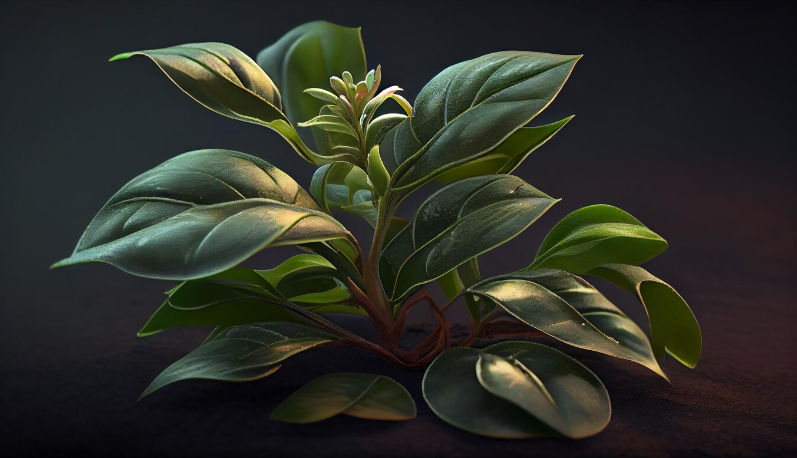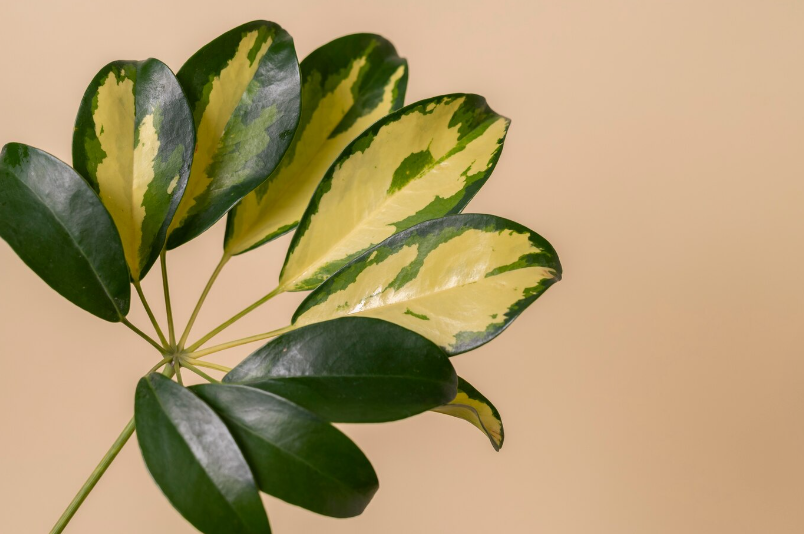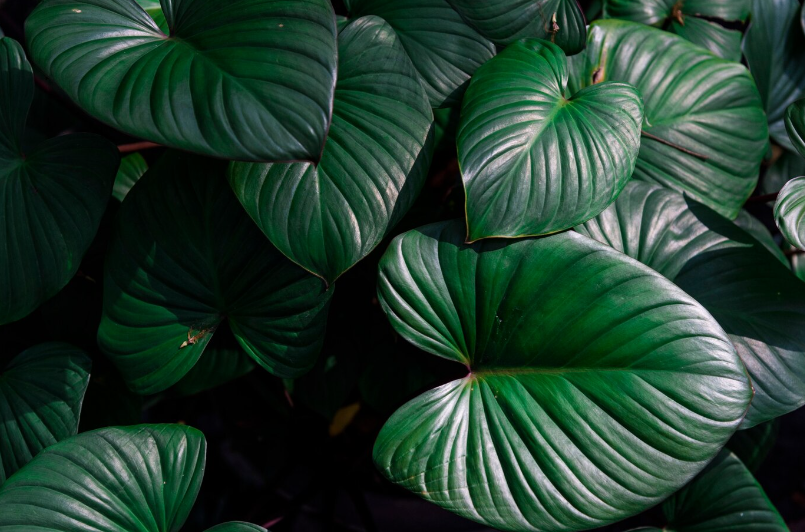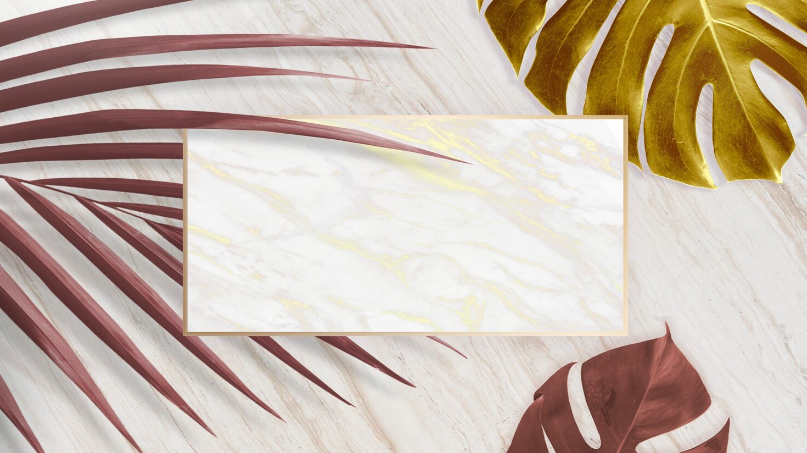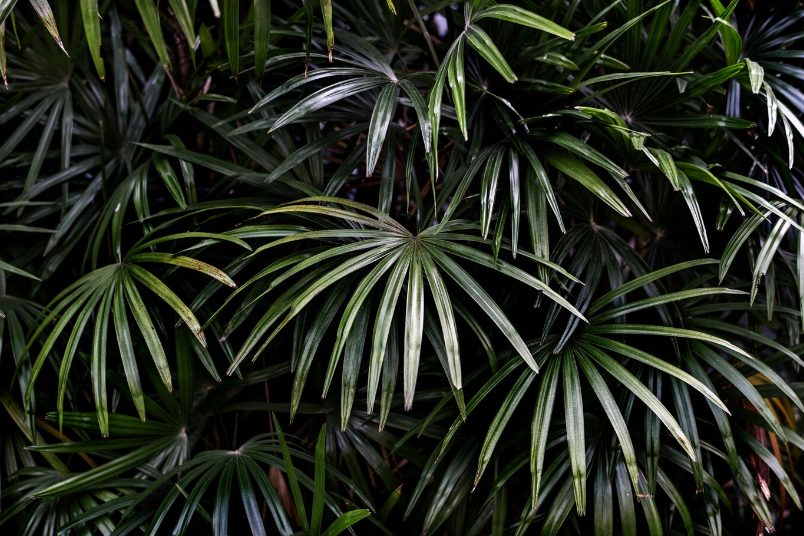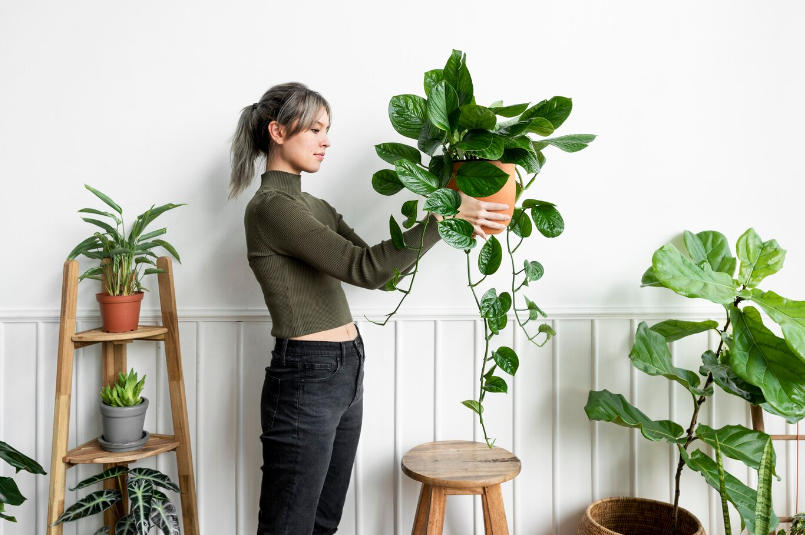Cultivating Philodendron Verrucosum Tips and Tricks
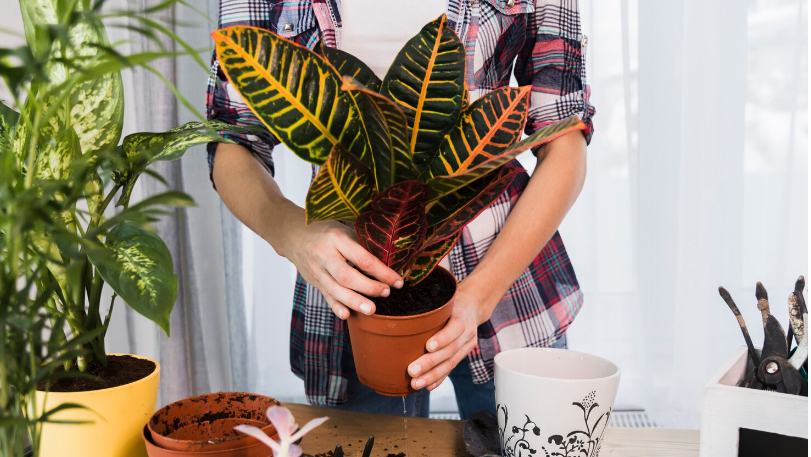
Philodendron verrucosum, also known as the velvet-leaf philodendron, is a stunning tropical plant that is prized for its lush and velvety foliage. With its unique and eye-catching leaves, this philodendron variety has become a favorite among plant enthusiasts.
If you are interested in cultivating this beautiful plant, there are a few tips and tricks that can help you successfully grow and care for your philodendron verrucosum. In this article, we will provide you with valuable insights and practical advice to ensure your plant thrives in its new home.
One of the most important aspects of cultivating philodendron verrucosum is providing the right environment and conditions for the plant to thrive. This tropical plant requires bright, indirect light and a humid environment to grow effectively. Placing your philodendron near a window with filtered sunlight or using artificial grow lights can help provide the ideal light conditions.
In addition to proper lighting, maintaining a humid environment is essential for the health of your philodendron verrucosum. You can increase humidity levels by misting the leaves regularly or placing the plant on a tray filled with water and pebbles. Another tip is to group your philodendron with other plants, as this will create a microclimate that helps retain moisture.
What is Philodendron Verrucosum?
Philodendron verrucosum is a species of tropical plant belonging to the Araceae family. It is known for its unique foliage and veined leaves that give it an exotic appearance. Native to the rainforests of South America, specifically in Colombia and Ecuador, this philodendron has become a popular choice among houseplant enthusiasts.
The leaves of Philodendron verrucosum are large and velvety, with a deep green color and a distinct texture. The veins on the leaves create an interesting pattern, giving the plant a rustic and charismatic look.
Cultivating Philodendron verrucosum requires specific care and attention. It prefers bright, indirect light and high humidity levels, making it suitable for tropical and subtropical climates. Regular watering and well-draining soil are crucial for the health and growth of this plant.
One trick for cultivating Philodendron verrucosum is to provide it with a moss pole or other structure to climb. This will help the plant to grow vertically and allow its leaves to spread out naturally, enhancing its overall appearance.
In summary, Philodendron verrucosum is a stunning tropical plant with unique foliage and veined leaves. By providing the right conditions and utilizing the appropriate tricks, you can successfully cultivate and enjoy the beauty of this philodendron species.
Benefits of Cultivating Philodendron Verrucosum
The Philodendron Verrucosum is a beautiful and unique plant that offers a range of benefits when cultivated. Here are some reasons why you should consider adding this plant to your collection:
1. Exotic Beauty
The Philodendron Verrucosum is known for its stunning appearance. With its large, velvety leaves and rich green color, it adds a touch of elegance to any indoor space. It is a conversation starter and a visually appealing addition to your home or office.
2. Low Maintenance
This plant is relatively easy to care for, making it a great choice for both beginner and experienced gardeners. It doesn’t require a lot of water and can tolerate a wide range of light conditions, including low light. It is the perfect plant for those who want a beautiful addition to their space without the hassle of high-maintenance care.
3. Air Purification
Like other philodendron plants, the Verrucosum is known for its air-purifying properties. It can help remove toxins such as formaldehyde and benzene from the air, improving the overall air quality in your home or office. This can have a positive impact on your health and well-being.
4. Natural Décor
The Philodendron Verrucosum adds a touch of nature to any space, creating a calming and relaxing atmosphere. Whether placed on a shelf, hanging in a basket, or climbing up a trellis, it brings a natural and organic element to your interior design.
In summary, cultivating Philodendron Verrucosum offers a range of benefits. Its exotic beauty, low maintenance requirements, air purifying properties, and natural décor qualities make it a great addition to any indoor space. Consider adding this unique plant to your collection for a touch of elegance and a breath of fresh air.
Choosing the Right Location
When cultivating Philodendron Verrucosum, selecting the right location is crucial for optimal growth and health of the plant. Here are some tips and tricks to help you choose the perfect spot:
| Light | Place your Philodendron Verrucosum in a location with bright, filtered light. Avoid direct sunlight as it can scorch the leaves. A north-facing window or an area with indirect light is ideal. |
| Temperature | Maintain a consistent temperature between 65°F and 80°F (18°C and 27°C) for your Philodendron Verrucosum. Avoid exposing the plant to drastic temperature fluctuations or drafts. |
| Humidity | Philodendron Verrucosum thrives in high humidity environments. Consider placing the plant in a bathroom or near a humidifier to increase moisture levels. Mist the leaves regularly to provide extra humidity. |
| Air Circulation | Good air circulation is important for preventing the growth of mold or fungal diseases. Avoid placing the plant in a stagnant or poorly ventilated area. However, make sure to keep it away from strong drafts. |
| Space | Philodendron Verrucosum can grow quite large, so it’s important to choose a location with enough space for the plant to spread out. Make sure it has room to grow both horizontally and vertically without being cramped. |
By considering these factors and selecting the right location, you will provide the best environment for your Philodendron Verrucosum to thrive and show off its beautiful foliage.
Indoor or Outdoor?
If you’re thinking about cultivating Philodendron Verrucosum, you might be wondering whether it’s best to keep it indoors or outdoors. Well, the good news is that this stunning plant can thrive in both settings!
Indoor cultivation of Philodendron Verrucosum allows you to closely monitor its growth and environmental conditions. This gives you greater control over factors like lighting, temperature, and humidity, which can be crucial for this tropical species. By placing your Philodendron Verrucosum in a well-lit spot with indirect sunlight and maintaining consistent humidity levels, you can create an ideal indoor environment for its growth.
On the other hand, if you live in a suitable climate, you can also grow Philodendron Verrucosum outdoors. This plant loves warm and humid conditions, so if your region experiences mild winters and hot summers, it can thrive in your garden or patio. Just make sure to provide it with some shade during the hottest hours of the day to prevent sunburn.
Ultimately, the choice between indoor and outdoor cultivation depends on your specific circumstances and preferences. Whichever you choose, following the tips and tricks for cultivating Philodendron Verrucosum will help you create a thriving environment for this beautiful plant.
Light Requirements
Proper lighting is crucial when cultivating Philodendron Verrucosum. This exotic plant needs a bright but filtered light to thrive. Placing your Philodendron Verrucosum near a window that receives indirect sunlight is ideal.
Direct sunlight can cause the leaves to burn and damage the plant, so it’s important to provide some shade. If you notice that the leaves are turning yellow or brown, it may be a sign that the plant is getting too much direct sunlight.
Tricks for providing the right light:
- Use sheer curtains or blinds to filter the light if the window receives intense sunlight.
- Rotate the plant every few weeks to ensure that all sides receive an equal amount of light. This will promote even growth.
Remember that different seasons may affect the amount of light your Philodendron Verrucosum receives. During winter months, when daylight hours are shorter, you may need to supplement the natural light with artificial grow lights.
Tips for using grow lights:
- Choose a full spectrum LED grow light that mimics natural sunlight.
- Place the grow light 12-18 inches above the plant, and adjust the height as the plant grows.
By providing the right amount and quality of light, you can help your Philodendron Verrucosum thrive and display its beautiful foliage.
Temperature and Humidity
Proper temperature and humidity levels are key to successfully cultivating Philodendron Verrucosum. Here are some tips and tricks:
-
- Temperature:
Philodendron Verrucosum thrives in temperatures between 65-80°F (18-27°C). It is important to avoid extreme temperature fluctuations, as it can stress the plant and affect its overall health. Keep the plant away from cold drafts or direct exposure to heat sources.
-
- Humidity:
High humidity is essential for Philodendron Verrucosum to thrive. Aim for humidity levels of around 60-70%. You can increase humidity by misting the leaves regularly, placing a humidifier near the plant, or using a pebble tray filled with water.
-
- Temperature and Humidity Balance:
It is important to strike a balance between temperature and humidity. While Philodendron Verrucosum prefers higher humidity levels, it is crucial to ensure good air circulation and prevent the development of mold or fungal diseases. Monitor the humidity levels regularly and adjust as needed.
By providing the right temperature and humidity conditions, you can create an ideal environment for your Philodendron Verrucosum to thrive and grow vigorously.
Soil and Watering
When it comes to cultivating Philodendron Verrucosum, the right soil and watering practices are vital for its health and growth. Here are some tips and tricks to help you create the best environment for your Philodendron Verrucosum:
Choosing the Right Soil
Philodendron Verrucosum prefers a well-draining soil mix that retains some moisture without becoming waterlogged. A good soil mix for this plant should consist of equal parts peat moss, perlite, and orchid bark. This mixture provides excellent drainage while retaining enough moisture for the plant’s needs.
Watering Tips
Watering the Philodendron Verrucosum can be a bit tricky, as overwatering can lead to root rot and other issues. Here are some watering tips to keep in mind:
- Only water the plant when the top inch of soil feels dry to the touch. This can vary depending on factors such as temperature and humidity, but typically it will require watering every 7-10 days.
- When watering, thoroughly saturate the soil until water drains out of the bottom of the pot. This helps to flush out any built-up salts and ensures that the entire root system receives moisture.
- Avoid letting the plant sit in standing water, as this can lead to root rot. Make sure the pot has drainage holes to allow excess water to escape.
By following these soil and watering tips, you can create an ideal growing environment for your Philodendron Verrucosum, promoting healthy growth and a thriving plant.
Best Soil Mix
One of the key factors in successfully cultivating Philodendron Verrucosum is having the right soil mix. This plant, with its unique and stunning foliage, requires a well-draining but moisture-retentive soil to thrive.
A good soil mix for Philodendron Verrucosum is lightweight and airy, allowing for proper root development and oxygen flow. It should also hold enough moisture to keep the plant hydrated, but not so much that it becomes waterlogged.
One recommended soil mix for cultivating Philodendron Verrucosum is a combination of peat moss, perlite, and orchid bark. The peat moss provides moisture retention, while the perlite adds drainage and aeration. The orchid bark helps to create an optimal balance in the soil and prevents compaction.
When preparing the soil mix, it is important to sterilize the components beforehand to prevent any potential diseases or pests. This can be done by baking the soil components in the oven at a low temperature or using a microwave.
Once the soil mix is ready, it is crucial to plant the Philodendron Verrucosum in a pot with adequate drainage holes. This ensures excess water can escape and prevents waterlogging, which can lead to root rot.
In addition to the right soil mix, it is also essential to provide the Philodendron Verrucosum with proper watering and light conditions. These plants prefer bright, indirect light and should be watered when the top inch of the soil feels slightly dry.
By using the best soil mix for cultivating Philodendron Verrucosum and maintaining optimal growing conditions, you can enjoy a healthy and thriving plant with its magnificent velvety leaves.
Watering Frequency
Proper watering frequency is crucial when cultivating Philodendron Verrucosum. Overwatering can lead to root rot and other diseases, while underwatering can cause the plant to become dehydrated.
To determine the watering frequency for your Philodendron Verrucosum, it is important to consider factors such as the humidity level, temperature, and the size of the pot. Remember that it is always better to underwater than to overwater.
The best way to check if your Philodendron Verrucosum needs water is to touch the soil with your fingertips. If the top inch of the soil feels dry, it is time to water. However, make sure not to let the plant sit in water as this can cause root rot.
It is also helpful to pay attention to the leaves of your Philodendron Verrucosum. If they start to wilt or appear droopy, it is a sign that the plant needs water. On the other hand, if the leaves feel soft or mushy, it could be a sign of overwatering.
As a general rule, water your Philodendron Verrucosum thoroughly until the water drains out of the bottom of the pot. Then, allow the soil to dry out slightly before watering again. This will help prevent waterlogging and promote healthy root growth.
Remember that the specific watering frequency may vary depending on the environment and individual plant needs. It is important to observe your Philodendron Verrucosum closely and adjust the watering accordingly.
Important Tips and Tricks:
- Avoid using cold or chlorinated water, as it can shock the plant. Allow tap water to sit for at least 24 hours before using it.
- Consider using a well-draining potting mix specifically designed for tropical plants like Philodendron Verrucosum.
- If you are unsure about the watering frequency, it is always better to underwater than to overwater. Philodendron Verrucosum can tolerate short periods of drought better than excessive moisture.
- During colder months or when the plant is in a dormant phase, reduce the watering frequency to avoid overwatering.
By following these tips and tricks, you can ensure that your Philodendron Verrucosum receives the proper amount of water, promoting healthy growth and vibrant foliage.
Watering Tips
To successfully cultivate the Philodendron Verrucosum, it is important to pay attention to watering. Here are some useful tips to keep in mind:
1. Determine the Right Frequency
Finding the right watering frequency is crucial for the health of your Philodendron Verrucosum. It is best to water deeply but infrequently rather than using small amounts of water frequently. Wait until the soil is dry to about an inch deep before watering again.
2. Avoid Overwatering
Overwatering is a common mistake when caring for Philodendron Verrucosum. Ensure that the pot has proper drainage holes and avoid letting the plant sit in water for extended periods. Excess water can lead to root rot and other issues.
3. Check the Soil Moisture Level
Before watering, check the moisture level in the soil by sticking your finger about an inch deep. If it feels dry, it’s time to water, but if it still feels moist, wait for a few more days before watering again.
4. Use Room Temperature Water
When watering your Philodendron Verrucosum, it is best to use room temperature water. Cold water can shock the plant and potentially damage the roots, while hot water can scorch the leaves.
By following these watering tips, you can ensure that your Philodendron Verrucosum stays healthy and thrives in its environment.
Propagation Techniques
Propagating a philodendron verrucosum can be a rewarding experience for any plant enthusiast. Here are some tips and tricks to help you successfully cultivate new plants:
1. Stem Cuttings
One of the most common methods of propagating a philodendron verrucosum is through stem cuttings. Select a healthy and mature stem, and cut it just below a node. Remove the lower leaves, leaving a few at the top. Dip the cut end in rooting hormone, and place it in a well-draining potting mix. Keep the soil slightly moist and provide indirect sunlight. After a few weeks, roots should start to develop, and you can pot the new plant in a larger container.
2. Air Layering
Another method of propagating philodendron verrucosum is through air layering. Choose a section of the stem where you want the new plant to form roots. Make two vertical cuts, about an inch apart, and remove the bark between them. Apply some rooting hormone to the exposed portion. Wrap the area with damp sphagnum moss, and cover it with plastic wrap. Secure the moss and plastic with string or twist ties. Keep the moss moist and wait for roots to develop. Once roots are well-established, cut below the air layer and pot the new plant.
3. Division
If your philodendron verrucosum has multiple stems or clumps, you can propagate it through division. Carefully remove the plant from its pot and separate the individual stems or clumps. Make sure each section has roots and some healthy foliage. Pot the divisions in their own containers, using well-draining soil. Water the newly potted plants, and place them in a bright, indirect light location. Monitor the soil moisture and adjust watering as needed.
By using these propagation techniques, you can expand your collection of philodendron verrucosum and share the beauty of this unique plant variety with others.
Stem Cutting
To propagate philodendron verrucosum, a popular method is stem cutting. This technique involves taking a cutting from the stem of a mature plant and encouraging it to root and grow into a new plant.
Here are a few tips and tricks for successful stem cutting:
1. Choose a healthy stem: Look for a stem that is mature and free from any signs of disease or damage. It should be firm and green.
2. Prepare the cutting: Using a clean, sharp knife or scissors, take a cutting that is 4-6 inches long. Make sure to cut below a node, as this is where roots will develop.
3. Remove lower leaves: Remove any leaves from the lower part of the cutting, leaving only a few leaves at the top. This will help the cutting focus its energy on root development.
4. Apply rooting hormone: Dip the cut end of the stem into a rooting hormone powder or gel to encourage root growth.
5. Plant the cutting: Fill a small pot with a well-draining potting mix and make a hole in the center. Place the cutting into the hole and gently press the soil around it. Keep the soil slightly moist but not overly wet.
6. Provide the right conditions: Place the pot in a warm, bright area with indirect sunlight. Avoid direct sunlight, as it can scorch the cutting. Maintain a temperature of around 70-75°F (21-24°C) and provide humidity by covering the pot with a plastic bag or using a humidity dome.
7. Monitor and care for the cutting: Check the cutting regularly for signs of growth and root development. Mist the leaves with water to keep them hydrated and remove any yellowing or dead leaves. Once the roots have developed, you can transplant the cutting into a larger pot with regular philodendron verrucosum care.
By following these tips and tricks, you can successfully propagate philodendron verrucosum through stem cutting and expand your collection of these beautiful plants.
Air Layering
Air layering is a popular propagation method for Philodendron verrucosum and other plants. This technique involves creating a new plant from an existing one by encouraging roots to grow from a stem while it is still attached to the parent plant.
To perform air layering, follow these steps:
- Choose a healthy, mature stem on the parent plant. It should be around 1/4 to 1/2 inch thick and have several nodes.
- Make a horizontal cut around the stem, approximately halfway through. This cut should be clean and not damage the stem.
- Apply a rooting hormone to the cut area to encourage root growth.
- Wrap the cut area with moist sphagnum moss or a damp paper towel.
- Cover the moss or towel with plastic wrap to create a humid environment.
- Secure the plastic wrap with twine or a rubber band above and below the moss or towel to keep it in place.
- Monitor the progress by checking the moss or towel regularly. Keep it consistently moist but not soaking wet.
- After a few weeks or when roots have formed, carefully cut below the rooted area and separate the new plant from the parent plant.
- Plant the new plant in a well-draining potting mix and provide it with the appropriate care.
Air layering can be a successful way to propagate Philodendron verrucosum and expand your collection. It is a reliable method that allows you to create new plants with the same desirable traits as the parent plant. With these tips and tricks, you can confidently try air layering and enjoy the rewards of cultivating this unique and beautiful plant.
Note: Please exercise caution and follow proper safety measures when performing air layering. Wear gloves and use clean, sterilized tools to prevent any damage or infection to the plants.
Dividing the Plant
Dividing a philodendron verrucosum plant can be a great way to propagate new plants and keep your existing ones healthy. Here are some tips and tricks to successfully divide your plant:
1. Choose the Right Time
The best time to divide a philodendron verrucosum is during the spring or early summer when the plant is actively growing. This will give the divided sections the best chance of establishing themselves.
2. Prepare the Plant
Before dividing the plant, make sure to water it thoroughly a day or two before. This will help the roots and soil hold together better during the division process.
3. Gently Separate the Sections
Once the plant is prepared, carefully remove it from its pot. Gently tease the roots apart to separate the sections. Be careful not to damage the roots or stems during this process.
4. Replant the Divisions
After dividing the plant, replant each section in its own pot with fresh potting soil. Make sure the pots have good drainage to prevent waterlogged roots.
5. Provide Proper Care
After dividing, the new plants will need some time to recover. Place them in a warm, humid location with bright, indirect light. Water regularly and mist the leaves to maintain humidity.
By following these tips and tricks, you can successfully divide a philodendron verrucosum and expand your collection of these beautiful plants.
Common Problems and Solutions
When it comes to cultivating Philodendron Verrucosum, there are several common problems that growers may encounter. Here are some tips and tricks for addressing these issues:
Pest Infestation
One common problem with Philodendron Verrucosum is pest infestation. These plants are susceptible to pests like aphids, mealybugs, and spider mites. If you notice any signs of pest infestation, such as small bugs or webbing, it’s important to take action immediately.
Solution: To combat pest infestation, you can try using an organic insecticidal soap or neem oil. Apply the solution to affected areas of the plant, making sure to cover all surfaces. Repeat the treatment every week until the pests are completely eliminated.
Yellowing Leaves
Yellowing leaves can be a sign of various issues, including overwatering, underwatering, or nutrient deficiencies. It’s important to determine the underlying cause in order to properly address the problem.
Solution: If you notice yellowing leaves, first check the moisture level of the soil. If it feels wet or soggy, the plant may be overwatered. Allow the soil to dry out before watering again. If the soil feels dry, the plant may be underwatered, and you should increase the frequency of watering. It’s also a good idea to check the pH level of the soil and provide appropriate fertilization to ensure the plant is receiving adequate nutrients.
Root Rot
Root rot can occur if the plant is consistently overwatered, leading to the roots becoming waterlogged and prone to fungal infections. If left untreated, root rot can be fatal to the plant.
Solution: To address root rot, it’s important to promptly remove the affected plant from its pot. Carefully inspect the roots for any signs of rot, such as a foul odor or black, mushy roots. Trim away any affected roots and repot the plant in fresh, well-draining soil. Adjust the watering schedule and make sure the plant is not sitting in excess water.
- Regularly inspect your Philodendron Verrucosum for any signs of pests or diseases.
- Ensure the plant is placed in a well-lit area, but avoid direct sunlight.
- Maintain proper humidity levels by using a humidifier or placing the plant on a pebble tray.
- Prune the plant regularly to encourage proper growth and remove any yellow or damaged leaves.
By following these tips and tricks, you can help ensure the health and longevity of your Philodendron Verrucosum. Remember to stay observant and take prompt action to address any problems that arise.
Question-answer:
What are the basic care requirements for Philodendron Verrucosum?
Philodendron Verrucosum requires bright, indirect light, well-draining soil, regular watering, and high humidity. It also benefits from occasional fertilization and regular pruning to maintain its shape.
Can Philodendron Verrucosum tolerate low light conditions?
While Philodendron Verrucosum prefers bright, indirect light, it can tolerate lower light conditions for short periods. However, prolonged exposure to low light may cause the plant to become leggy and lose some of its characteristic foliage.
How often should I water Philodendron Verrucosum?
Philodendron Verrucosum likes to be kept evenly moist but not waterlogged. Watering once a week and allowing the top few inches of soil to dry out slightly between waterings is generally a good rule of thumb. Adjust the frequency of watering based on the specific conditions of your plant’s environment.
How do I increase humidity for my Philodendron Verrucosum?
There are several ways to increase humidity for Philodendron Verrucosum. You can place a tray of water near the plant, use a humidifier, mist the leaves regularly, or group the plant with other moisture-loving plants. Another option is to create a humidity tray by placing pebbles in a tray and adding water so that the bottom of the pot is above the water level.
Why is my Philodendron Verrucosum not growing well?
There could be several reasons why your Philodendron Verrucosum is not growing well. It might not be getting enough light, the soil may not be well-draining, the humidity levels may be too low, or it could be lacking nutrients. Assess the growing conditions and make any necessary adjustments to help promote healthy growth.
How often should I water my Philodendron Verrucosum?
Water your Philodendron Verrucosum when the top inch of soil feels dry. It is best to water deeply until the water drains out of the bottom of the pot and then allow the soil to dry out before watering again. Be sure to avoid overwatering, as this can lead to root rot.
What type of light does Philodendron Verrucosum prefer?
Philodendron Verrucosum prefers bright, indirect light. Avoid placing it in direct sunlight, as this can scorch the leaves. It can tolerate lower light conditions, but may grow more slowly.
